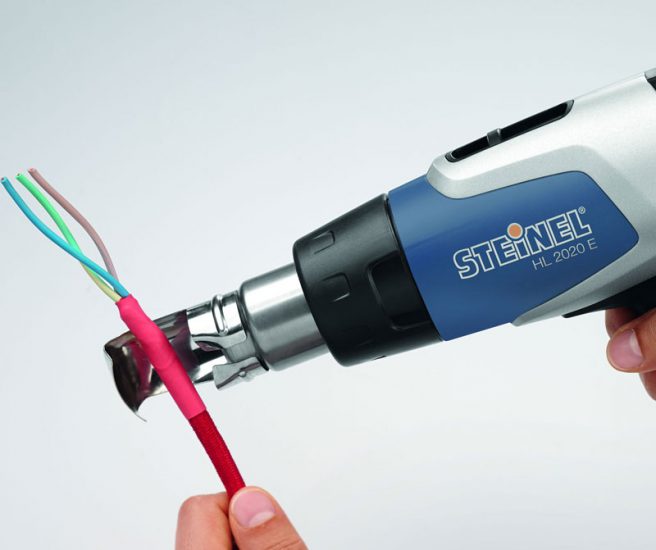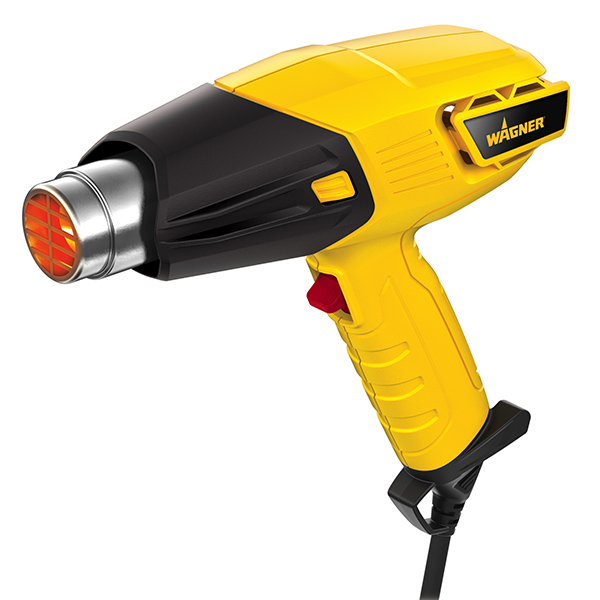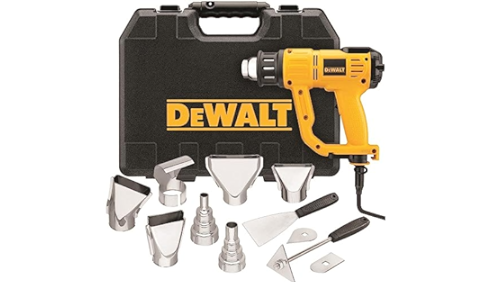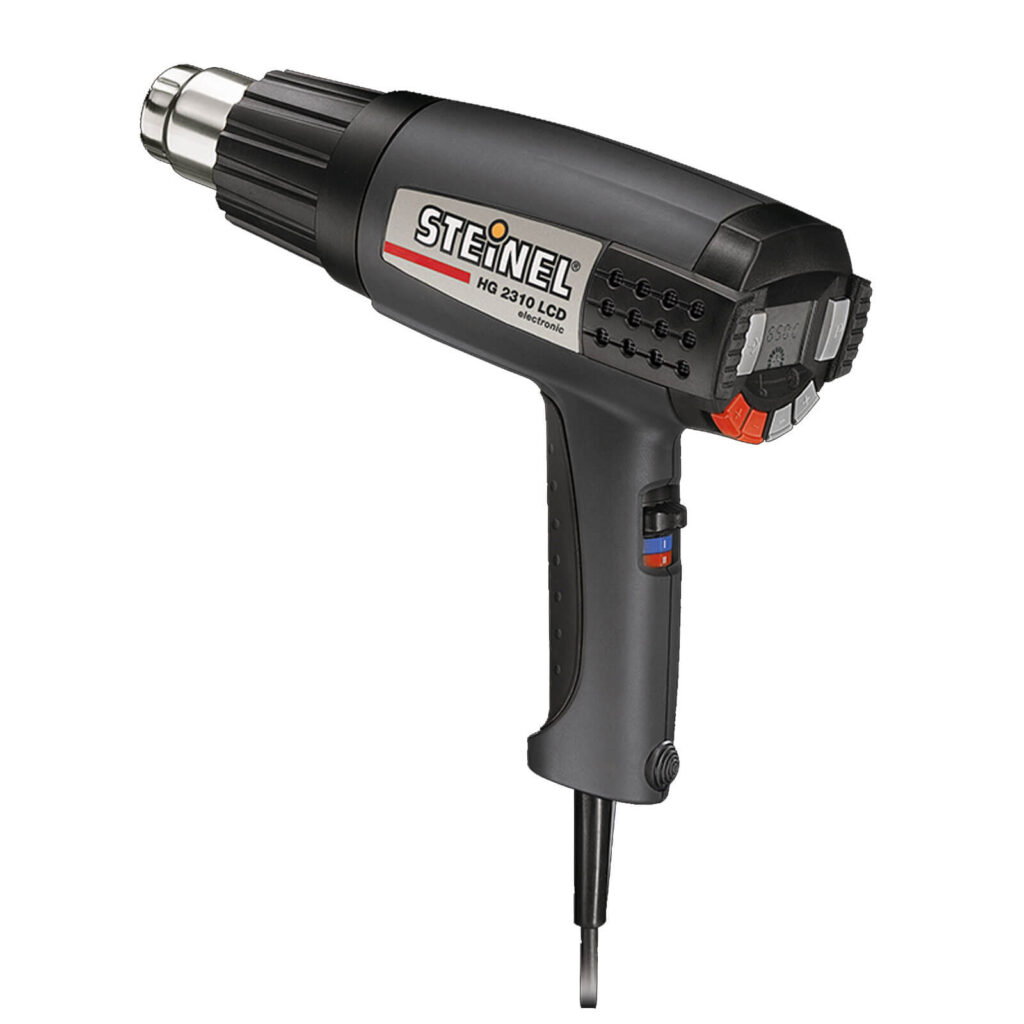How to Choose a Heat Gun: A Comprehensive Guide
What a Heat Gun is?
How to Choose a Heat Gun? It is nonetheless important question, but before that we need to look into what a head gun is? A heat gun is a versatile handheld tool designed to emit a stream of hot air for various applications. It operates by passing an electric current through a heating element, which in turn generates a controlled flow of hot air. This device finds wide-ranging utility across multiple industries, including construction, automotive, electronics, crafting, and more. The heat emitted can be finely regulated, making it an indispensable tool for tasks that require precise and controlled heating.
Importance of Choosing the Right Heat Gun for Specific Applications
Selecting the appropriate heat gun for a particular application is pivotal for achieving optimal results. The diverse array of available heat guns, each tailored for specific purposes, underscores the critical nature of this decision. Using an ill-suited heat gun can lead to inefficiency, potential damage to materials, and in some cases, safety hazards. Conversely, employing the right heat gun ensures a seamless and efficient process, enhancing overall productivity and the quality of the finished work.
Considerations Before Buying a Heat Gun
When it comes to choosing the right heat gun, several key considerations must be taken into account to ensure that the selected tool aligns with the intended purpose and provides optimal performance. These factors not only dictate the efficiency of the heat gun but also play a vital role in achieving desired outcomes for various applications.
Purpose and Intended Use
Selecting a heat gun tailored to your specific needs is paramount in achieving successful outcomes. Consider the following:
1. DIY Projects
For individuals engaging in do-it-yourself projects, a versatile heat gun capable of handling a range of materials is essential. These projects may encompass tasks such as paint removal, bending plastics, or thawing frozen pipes. Look for a heat gun that offers a variety of temperature settings and compatible attachments for versatility.
2. Professional Applications
Professionals, including craftsmen, technicians, and artisans, often require heat guns for specialized tasks. These applications may involve welding, soldering, or working with specialized materials like shrink wrap or heat-shrink tubing. For professionals, precision, reliability, and durability are critical. Investing in a high-quality, purpose-built heat gun designed for specific tasks can significantly enhance productivity and quality of work.
Temperature Range and Control
The ability to control the temperature of a heat gun is crucial for adapting it to different materials and tasks. This feature allows for precision and prevents damage to sensitive materials.
1. Variable Temperature Settings
A heat gun with variable temperature settings provides flexibility in handling different materials. This feature allows users to adjust the heat output to match the requirements of the task at hand. For instance, delicate materials like certain plastics or fabrics necessitate lower temperatures, while more robust materials may require higher heat levels.
2. Importance of Adjustable Temperature for Different Materials
Using an appropriate temperature setting minimizes the risk of overheating or scorching materials. It is particularly crucial when working with substances like plastics, which can deform or melt at high temperatures. Additionally, precise temperature control is indispensable for tasks that demand a delicate touch or fine detailing.
Airflow and Fan Speed
Airflow and fan speed determine how efficiently heat is distributed across a surface. This factor significantly impacts the precision and uniformity of heating.
1. High and Low-Speed Options
Heat guns offer different fan speed settings to accommodate various applications. Higher fan speeds deliver more intense airflow, suitable for tasks requiring rapid heating or for dispersing heat across larger surfaces. Conversely, lower speeds provide more precise control, making them suitable for detailed work or when working with delicate materials.
2. Impact on Heat Distribution and Precision
The fan speed directly influences how evenly heat is distributed. Balancing airflow with temperature control ensures that heat is applied consistently, preventing hotspots that can lead to uneven results or potential damage to materials. This is particularly critical when working on projects that demand meticulous precision.
Wattage and Power
Understanding the relationship between wattage and heat output is essential for selecting a heat gun that meets both performance and energy efficiency requirements.
1. How Wattage Affects Heat Output
Wattage denotes the power consumption of a heat gun and directly correlates with the intensity of heat it can produce. Higher wattage models generate more heat, which can be advantageous for tasks that demand rapid heating or working with dense materials. However, it’s important to note that higher wattage may also lead to increased energy consumption.
2. Balancing Power with Energy Efficiency
Choosing a heat gun with an appropriate wattage ensures that it meets the demands of the intended applications without unnecessary energy expenditure. Striking a balance between power and efficiency is essential to avoid overworking the tool or incurring excessive operational costs.
Safety Features
Safety is paramount when using a heat gun, especially in professional settings where precision and reliability are critical. Here are some key safety features to consider:
Overheat Protection
Overheat protection is a vital safety feature that prevents the heat gun from becoming dangerously hot and potentially causing damage or injury. This mechanism automatically shuts off the heat gun if it reaches a temperature beyond safe operational limits. It provides a safeguard against accidental overheating due to prolonged use or technical malfunctions.
Investing in a heat gun with reliable overheat protection ensures a secure working environment and extends the lifespan of the tool. Look for models with advanced thermal sensors and fail-safes that swiftly respond to fluctuations in temperature.
Cool Down Time
The cool down time of a heat gun is a crucial aspect of its safety profile. After use, a heat gun should cool down efficiently to a temperature where it can be safely stored or transported. Rapid cool down times not only enhance convenience but also reduce the risk of accidental burns or mishandling.
It is recommended to opt for heat guns equipped with efficient cooling systems and heat-resistant materials that expedite the cooling process without compromising on performance.
Ergonomics and Comfort
Comfort and ergonomics are often overlooked but essential elements in ensuring the safe and efficient use of a heat gun. A well-designed handle and grip reduce strain during extended periods of operation, minimizing the likelihood of accidental slips or mishaps.
Consider heat guns with contoured handles, non-slip surfaces, and balanced weight distribution for optimal comfort. Additionally, models with adjustable handles or grips accommodate different hand sizes and working conditions.
Safety Stand and Tips
A stable and secure safety stand is a fundamental safety feature, especially when momentarily setting down the heat gun during use. The stand prevents direct contact with surfaces, reducing the risk of heat damage to work surfaces or accidental contact with flammable materials.
Additional Features and Accessories
In addition to safety features, considering additional features and accessories can significantly enhance the versatility and usability of a heat gun:
Nozzles and Attachments
Different Nozzle Types (Reduction, Reflector, etc.)
Various nozzle types, including reduction and reflector nozzles, serve distinct purposes in directing and focusing heat. Reduction nozzles concentrate heat to a specific area, making them ideal for tasks requiring precision. Reflector nozzles disperse heat more broadly, making them suitable for larger surface areas.
Their Specific Applications
Understanding the specific applications of different nozzles is crucial for achieving desired results. Reduction nozzles are excellent for tasks like soldering, shrinking heat shrink tubing, and detail work. Reflector nozzles, on the other hand, are well-suited for tasks such as paint removal, thawing frozen pipes, and softening adhesives.
Cord Length and Flexibility
The length and flexibility of the cord significantly impact the practicality and maneuverability of a heat gun. A longer cord provides greater reach, reducing the need for extension cords and enhancing mobility. Additionally, a flexible cord minimizes resistance during operation, allowing for smoother and safer use.
When selecting a heat gun, consider the workspace and ensure that the cord length and flexibility align with the demands of the intended applications.
Warranty and Customer Support
A comprehensive warranty and reliable customer support are invaluable aspects of any high-quality heat gun. A manufacturer’s warranty provides assurance against potential defects or malfunctions, offering peace of mind to the user.
Also, responsive and accessible customer support channels ensure that any queries or concerns are promptly addressed. Prioritize models backed by reputable manufacturers known for their commitment to customer satisfaction.
Top Picks Of Heat Guns
1. Best Overall: Wagner Furno 300
- Features: Adjustable temperature settings, ergonomic design, integrated stand, and multiple nozzle options.
- Why: Known for its versatility, reliability, and precise temperature control, the Wagner Furno 300 is a favorite among both DIYers and professionals.
2. Best for Heavy-Duty Use: DEWALT D26960K
- Features: High wattage, digital display, overload protection, and specialized kickstand for hands-free operation.
- Why: With its robust build and powerful performance, the DEWALT D26960K excels in demanding industrial applications.
3. Budget-Friendly Option: BLACK+DECKER HG1300
- Features: Two temperature settings, compact design, and a budget-friendly price point.
- Why: Offering solid performance at an affordable price, the BLACK+DECKER HG1300 is an excellent choice for occasional use and budget-conscious consumers.
4. Best for Precision Work: Steinel HG 2310 LCD
- Features: LCD display, precise temperature control, adjustable airflow, and a range of specialized nozzles.
- Why: The Steinel HG 2310 LCD is lauded for its accuracy and control, making it ideal for intricate tasks like soldering and shrinking heat-shrink tubing.
5. Cordless Option: Milwaukee M18
- Features: Cordless design, fast heat-up time, variable temperature settings, and compatibility with M18 batteries.
- Why: The Milwaukee M18 offers the convenience of portability without sacrificing power, making it a top choice for jobs where mobility is paramount.
Remember, the best heat gun for you will ultimately depend on your specific needs, preferences, and the type of projects you undertake. Always consider factors like temperature range, airflow control, and safety features when making your final selection. Additionally, reading user reviews and seeking recommendations from professionals in your field can provide valuable insights before making a purchase.
Conclusion
Selecting an appropriate heat gun is pivotal for achieving optimal results in a myriad of applications. This comprehensive guide has outlined crucial considerations, including purpose, temperature control, airflow dynamics, wattage, and safety features, all of which collectively contribute to an informed purchasing decision. Additionally, the discussion on additional features, budget considerations, and maintenance guidelines serves as a holistic approach towards ensuring the longevity and efficiency of the chosen heat gun. By adhering to these guidelines, users can confidently embark on their projects, be they DIY enthusiasts or seasoned professionals, equipped with the knowledge necessary to select a heat gun that aligns precisely with their requirements. It is imperative to emphasize that a well-informed choice not only enhances the quality of work but also ensures a safe and efficient working environment.





